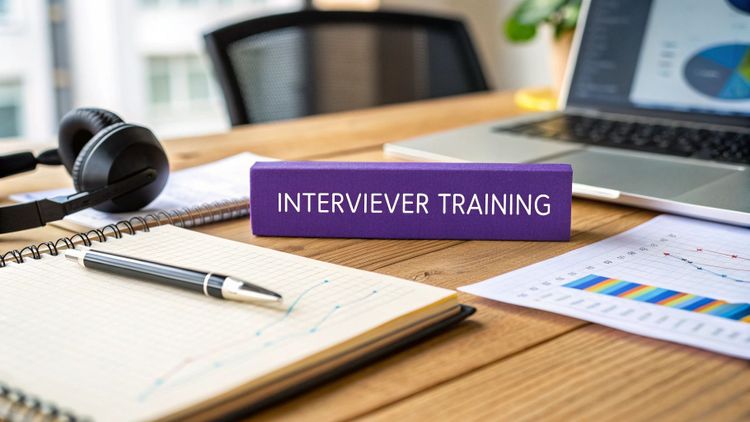HR Processes
8 Best Practices for Diversity Recruiting

An inclusive recruitment strategy isn’t just morally and socially correct – it also presents plenty of practical benefits to a business. And if you want to excel, diversity recruiting should be at the top of your to-do list.
Many hiring teams are already aware of these benefits and are hiring with diversity in mind. But if you want to have a competitive edge, you need to be the one that goes beyond.
This article will explore the case for diversity recruiting and go into detail on how to make your D&I program a success. Let’s dive in.

Why Is Diversity Recruiting Important?
Diversity in the workplace is becoming more of a priority across the world – and it’s not just because it sounds great on paper.
Workplace diversity has a concrete, measurable impact on your company, such as the following.
- Boosts revenue. In a 2018 article, Forbes cited a study that concluded that companies with high diversity in management positions earn 19% more in revenues than the industry average.
- Avoids echo chambers. Echo chambers created by groups of similar people can be hazardous when making important decisions – entertaining a wide range of perspectives minimises that.
- Enhances skill variety. Having a diverse range of skills is very valuable when solving problems at work.
- Improves cultural awareness. Direct and constant contact with different languages and cultures enriches individual worldviews and encourages them to form bonds.
- Strengthens employer brand. A 2020 survey by Glassdoor revealed that 76% of jobseekers consider diversity and inclusion a primary consideration when looking for companies to apply for.
Companies that make diversity and inclusion a priority see improvement on two fronts: people development and revenue.
If you also want to reap the benefits of a diverse workforce, you need to implement the best practices for diversity recruiting, which we’ll talk about in the next section.
Best Practices for Diversity Recruiting in 2022 and Beyond
1. Set definite and realistic D&I goals
One of the most common mistakes teams make when crafting their diversity hiring strategy is having vague or unrealistic goals.
Instead, you need to set clear and realistic goals for your business. You can start setting these expectations with the following tips.
- Research the industry. Find out what proportion in the labour market is made up of minorities and other groups and use it as a benchmark for your goals.
- Assess your diversity levels. Do a thorough audit to determine the D&I stats in your company. Look at any available hiring data and talk to employees as a starting point.
- Set contextual goals. At what point can you say your diversity initiatives were successful? How long will it take you to get there based on your current levels? Once you’ve answered those questions, you can start setting metrics to monitor.
2. Use a variety of channels when advertising
Different groups of people hang out in different places on the internet. This stratification can be best displayed by social media, given that different age groups frequent different types of social media platforms and messaging apps.
Reevaluate where you’re distributing your job ads – if you don't want similar results, don’t put them in similar places. Depending on the type of role, you may want to consider the following avenues:
- In job fairs and physical areas in your community for local, on-site jobs
- Across multiple social media platforms if hiring younger people
- Online platforms and job boards for remote roles
- In internet forums or message boards for niche, high-level positions
So you have plenty of choices for posting your job ad to attract a more diverse audience.
3. Create job posts using inclusive language
A study published in the Journal of Personality and Social Psychology presented evidence of gender-coded words in job advertisements and their substantial effects on the number of applicants going for the job.
One of the most quoted scenarios includes Buffer, who discovered that the word “hacker” was putting women off from relating to software developer positions.
So using the right language is critical for your job ads. If you want to attract a diverse pool of candidates, you need to ensure that your job descriptions are gender-neutral and inclusive.
Here are some steps that you can implement.
- Write for your ideal demographics. Write with diversity in mind from the get-go.
- Feature your company’s D&I potential. Showcase where you see the firm in the future as it relates to your D&I goals.
- Highlight diversity-oriented benefits. As discussed in the next section, ensure that your benefits are inclusive and diversity-oriented.
- Include your preferred qualifications. Make it clear that you accept people of different and non-conventional backgrounds.
4. Set up D&I-sensitive perks
Benefits are an excellent method to increase application rates – and D&I-sensitive perks will draw more diverse talent.
Here are a few ideas that you might look into when formulating benefits for your future hires.
- Equitable insurance coverage for LGBTQ couples
- Relevant medical benefits for transgender candidates looking into gender reassignment.
- IVF, adoption, and parental (paternal and maternal leave) plans
- Professional development that caters to non-traditional backgrounds
Benefits can be a powerful motivator in designing a diverse workplace so you need to make sure yours cater to the kind of people you want to employ.
5. Communicate your efforts
While your employees may know about your efforts to improve diversity levels in your workplace, people outside your organisation probably wouldn’t. This presents an excellent opportunity to communicate your hard work, establishing a strong employer brand.
Potential job applicants value diversity and inclusion, as we’ve seen in the previously-mentioned 2020 survey done by Glassdoor. The more you are seen as a champion of D&I efforts, the easier it is to attract relevant talent.
Here are a couple of ways to integrate your diversity and inclusion efforts into your branding strategy.
- Create content. Producing relevant content on your website, blog, or social media pages about diversity and inclusion will show people that you care – you also get to use your platform for good.
- Host events. Events that pay homage to diversity are a great way to show your alignment to the cause publicly. You can host or sponsor fundraisers, sports competitions, etc.
- Instil it into your work culture. Communicating your efforts doesn’t just mean telling the whole world what you’re doing but also living it yourself. Make your employees living and breathing testaments to the success of your efforts by instilling positive values.
- Take a stand. People are now looking for more accountability from brands so they want to know your stance on critical social issues.
6. Use an ATS to minimise bias in the hiring process
One of the most effective methods to implement diversity hiring is to use a blind shortlisting feature that some applicant tracking systems have.
Blind shortlisting will hide personal data that could trigger unconscious biases, such as name, race and religion.
Hiring managers can then refer their shortlisting decisions to the only available data, the candidate’s skills and competencies.
7. Measure diversity recruiting metrics
Measurement is a critical aspect of diversity recruiting – after all, you need to determine whether you’re making progress towards your goals. However, it’s not as easy as it sounds because you need to know what you should measure in the first place.
Here are several examples of diversity metrics that many companies follow.
- D&I employee satisfaction
- Diversity percentage per recruiting stage
- Minority diversity levels
- Minority group retention rates/turnover rates
- Diversity hire performance ratings
8. Ensure that inclusion occurs beyond recruitment
Your commitment to D&I goals shouldn’t just end with recruitment. A big part of D&I is also ensuring that you retain the diverse employees that you hire. You can only do this by keeping up your diversity efforts in the everyday lives of your employees.
You can improve diversity in your workplace by implementing five simple steps.
- Conduct regular diversity audits and set new goals for improvement.
- Keep up a constant channel of educating your employees about inclusivity.
- Appoint a Diversity Manager to oversee your progress towards D&I goals.
- Nurture inclusivity in your company culture through values.
Diversity Recruiting in 2022 and Beyond: Conclusion
Diversity recruiting is a critical part of your company’s journey to create a more equitable and productive workplace.
Admittedly, creating a diverse workplace might be long and arduous, but with the steps we talked about in this article, you now have a leg up in the race with a comprehensive diversity recruiting plan.
Did you know SeeMeHired comes with a built-in D&I module to help you attract and shortlist diverse talent? Learn more in a free demo.












































